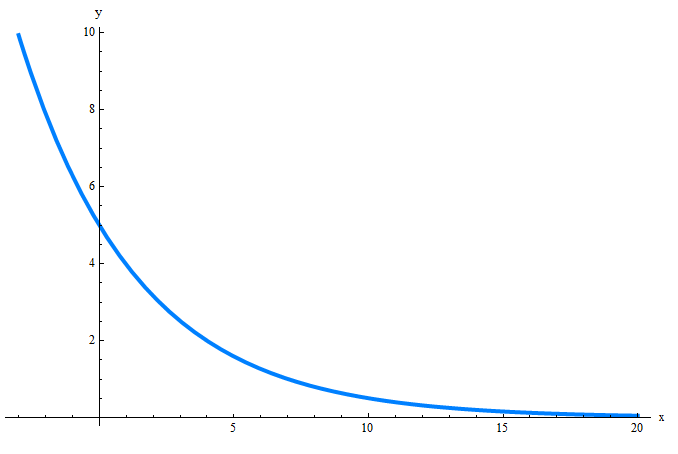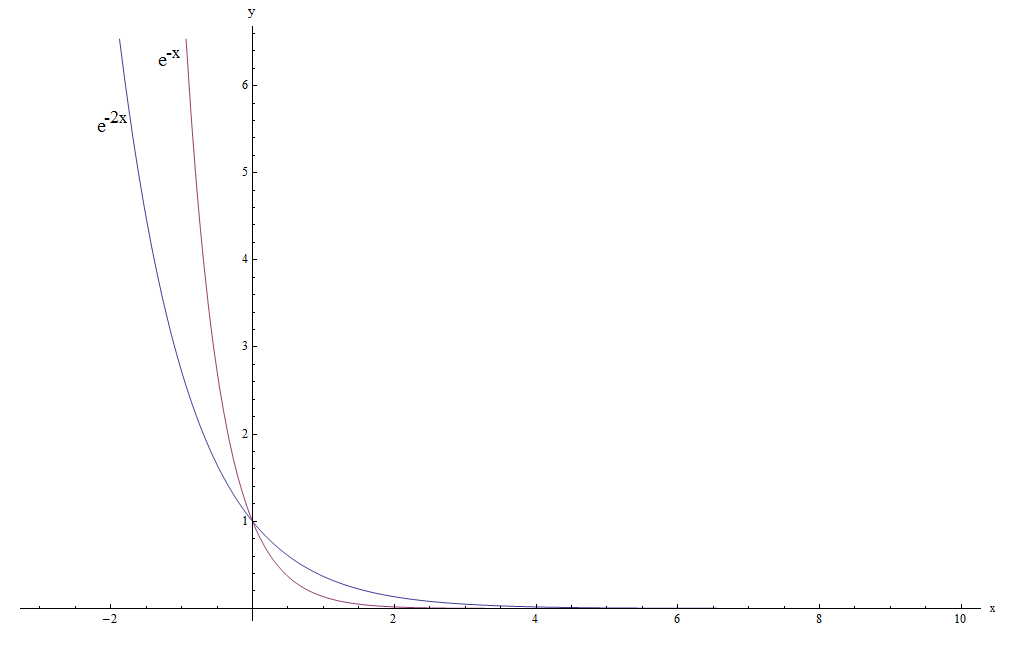Quadratic Factorization
Instructions: Use this quadratic factorization calculator to factor and express a quadratic function as a product of two monomials, showing all the steps. Please type in the quadratic function you need to factor in the form box below.
Factoring Quadratic Equations
This calculator allows you to compute a factor decomposition of a quadratic equation you provide. You need to provide a valid quadratic function, for example 5/4 x^2 +3x +1, but also you could provide a quadratic function that is not fully simplified, such as 2x^2 + 2x + 1/3 + 1/5 + 1/4 x, for example, provided that the quadratic equation is valid.
Naturally, factoring quadratic functions is tightly related with solving quadratic equations, and we will see that the factors readily contain the roots to the quadratic equation.
Actually, finding the roots of a quadratic equation is typically the most common way to factor a quadratic function. The other method is using the rational zero method.

How to do a quadratic factorization?
There are at least two systematic approaches to factoring quadratic equations. One of the most common ways is the method of finding the roots of the quadratic equation first:
- Step 1: Identify given quadratic function, and simplify it fully if necessary
- Step 2: Make sure the function in the form f(x) = ax² + bx + c
- Step 3: Use the quadratic formula: \(x = \displaystyle \frac{-b \pm \sqrt{b^2 - 4ac}}{2a} \) to find the roots \(x_1\) and \(x_2\)
- Step 4: The factorization is Use the quadratic formula: f(x) = ax² + bx + c = a(x - x₁)(x-x₂)
- Step 5: The above method works whether the roots are real or not
So in other words, the roots of the quadratic equations appear right there in the monomial terms.
How to do quadratic factorization with the rational zero?
The rational zero is a theorem that allows us to find a list of potential rational candidates that could be roots of the quadratic equation, and hence, they could be used to factorize the equation.
What are the steps the rational zero theorem?
- Step 1: Identify given quadratic function, and simplify it fully if necessary
- Step 2: Make sure the function in the form f(x) = ax² + bx + c
- Step 3: Find the integer (positive and negative) divisors of c and a. Then take every single divisor of c and divide it by every single divisor of a. This creates your list of rational candidates
- Step 4: Go through each of the elements in the list above, and check whether they are roots of the given quadratic equation or not
This method works for most cases, but only when the corresponding quadratic equation has rational roots.
Solve quadratic by factoring
As we have seen above, solving quadratics by factoring is tightly related to factoring the quadratic, and indeed, they are equivalent process.
Indeed, if we have managed to factorize a quadratic function, then we have to simply look at the monomial terms and get the roots right away. .
And conversely, if we have found the roots, we know the factorization is simply a(x - x₁)(x-x₂).

Example: Factorization method example
Factorize: \(f(x) = x^2 - 3x - 5\)
Solution:
We are provided with the following quadratic expression: \(\displaystyle x^2-3x-5\).
In this case, we have that the equation we need to try to factor is \(\displaystyle x^2-3x-5 = 0\), which implies that corresponding coefficients are:
\[a = 1\] \[b = -3\] \[c = -5\]Now, we need to find the integer numbers that divide \(a\) and \(c\), that will be used to construct our candidates to be factors.
The dividers of \(a = 1\) are: \(\pm 1\).
The dividers of \(c = -5\) are: \(\pm 1,\pm 5\).
Therefore, dividing each divider of \(c = -5\) by each divider of \(a = 1\), we find the following list of candidates to be factors:
\[\pm \frac{ 1}{ 1},\pm \frac{ 5}{ 1}\]Now, all the candidates need to be tested to see if they are a solution. The following is obtained from testing each candidates:
\[\begin{array}{cccccccc} x & = & \displaystyle -1 &:& & \displaystyle 1 \left(-1\right)^2-3 \left(-1\right)-5 & = & \displaystyle -1 \ne 0 \\\\ x & = & \displaystyle 1 &:& & \displaystyle 1 \left(1\right)^2-3 \left(1\right)-5 & = & \displaystyle -7 \ne 0 \\\\ x & = & \displaystyle -5 &:& & \displaystyle 1 \left(-5\right)^2-3 \left(-5\right)-5 & = & \displaystyle 35 \ne 0 \\\\ x & = & \displaystyle 5 &:& & \displaystyle 1 \left(5\right)^2-3 \left(5\right)-5 & = & \displaystyle 5 \ne 0 \\\\ \end{array}\]So then, none of the candidates is a root, and therefore, this method does not allow us to find the factors.
Using the Quadratic Formula
Since we could not find the roots using the potential rational candidates, we just use the quadratic formula. The following is obtained:
For a quadratic equation of the form \(a x^2 + bx + c = 0\), the roots are computed using the following formula:
\[x = \displaystyle \frac{-b \pm \sqrt{b^2-4ac}}{2a}\]In this case, we have that the equation we need to solve is \(\displaystyle x^2-3x-5 = 0\), which implies that corresponding coefficients are:
\[a = 1\] \[b = -3\] \[c = -5\]First, we will compute the discriminant to assess the nature of the roots. The discriminating is computed as:
Since in this case we get the discriminant is \(\Delta = \displaystyle 29 > 0\), which is positive, we know that the equation has two different real roots.
Now, plugging these values into the formula for the roots we get:
\[x = \displaystyle \frac{-b \pm \sqrt{b^2-4ac}}{2a} = \displaystyle \frac{3 \pm \sqrt{\left(-3\right)^2-4\left(1\right)\left(-5\right)}}{2\cdot 1} = \displaystyle \frac{3 \pm \sqrt{29}}{2}\]so then, we find that:
\[ x_1 = -\frac{1}{2}\sqrt{29}+\frac{3}{2} \] \[x_2 = \frac{1}{2}\sqrt{29}+\frac{3}{2}\]Therefore, the given equation \(\displaystyle x^2-3x-5=0\) has two different real roots, which are \(x_1 = \displaystyle -\frac{1}{2}\sqrt{29}+\frac{3}{2}\) and \(x_2 = \displaystyle \frac{1}{2}\sqrt{29}+\frac{3}{2}\).
Therefore, given that there are two real roots, the given quadratic function can be factorized as
\[ \displaystyle x^2-3x-5 = \displaystyle \left(x+\frac{1}{2}\sqrt{29}-\frac{3}{2}\right)\left(x-\frac{1}{2}\sqrt{29}-\frac{3}{2}\right)\]Example: Factoring quadratic expressions
Compute the factorization of: \( 3x^2 - 2x + 15\). Is the factorization real?
Solution:
We are provided with the following quadratic expression: \(\displaystyle 3x^2-2x+15\).
In this case, we have that the equation we need to try to factor is \(\displaystyle 3x^2-2x+15 = 0\), which implies that corresponding coefficients are:
\[a = 3\] \[b = -2\] \[c = 15\]Now, we need to find the integer numbers that divide \(a\) and \(c\), that will be used to construct our candidates to be factors.
The dividers of \(a = 3\) are: \(\pm 1,\pm 3\).
The dividers of \(c = 15\) are: \(\pm 1,\pm 3,\pm 5,\pm 15\).
Therefore, dividing each divider of \(c = 15\) by each divider of \(a = 3\), we find the following list of candidates to be factors:
\[\pm \frac{ 1}{ 1},\pm \frac{ 1}{ 3},\pm \frac{ 3}{ 1},\pm \frac{ 3}{ 3},\pm \frac{ 5}{ 1},\pm \frac{ 5}{ 3},\pm \frac{ 15}{ 1},\pm \frac{ 15}{ 3}\]Now, all the candidates need to be tested to see if they are a solution. The following is obtained from testing each candidates:
\[\begin{array}{cccccccc} x & = & \displaystyle -1 &:& & \displaystyle 3 \left(-1\right)^2-2 \left(-1\right)+15 & = & \displaystyle 20 \ne 0 \\\\ x & = & \displaystyle 1 &:& & \displaystyle 3 \left(1\right)^2-2 \left(1\right)+15 & = & \displaystyle 16 \ne 0 \\\\ x & = & \displaystyle -\frac{1}{3} &:& & \displaystyle 3 \left(-\frac{1}{3}\right)^2-2 \left(-\frac{1}{3}\right)+15 & = & \displaystyle 16 \ne 0 \\\\ x & = & \displaystyle \frac{1}{3} &:& & \displaystyle 3 \left(\frac{1}{3}\right)^2-2 \left(\frac{1}{3}\right)+15 & = & \displaystyle \frac{44}{3} \ne 0 \\\\ x & = & \displaystyle -3 &:& & \displaystyle 3 \left(-3\right)^2-2 \left(-3\right)+15 & = & \displaystyle 48 \ne 0 \\\\ x & = & \displaystyle 3 &:& & \displaystyle 3 \left(3\right)^2-2 \left(3\right)+15 & = & \displaystyle 36 \ne 0 \\\\ x & = & \displaystyle -5 &:& & \displaystyle 3 \left(-5\right)^2-2 \left(-5\right)+15 & = & \displaystyle 100 \ne 0 \\\\ x & = & \displaystyle 5 &:& & \displaystyle 3 \left(5\right)^2-2 \left(5\right)+15 & = & \displaystyle 80 \ne 0 \\\\ x & = & \displaystyle -\frac{5}{3} &:& & \displaystyle 3 \left(-\frac{5}{3}\right)^2-2 \left(-\frac{5}{3}\right)+15 & = & \displaystyle \frac{80}{3} \ne 0 \\\\ x & = & \displaystyle \frac{5}{3} &:& & \displaystyle 3 \left(\frac{5}{3}\right)^2-2 \left(\frac{5}{3}\right)+15 & = & \displaystyle 20 \ne 0 \\\\ x & = & \displaystyle -15 &:& & \displaystyle 3 \left(-15\right)^2-2 \left(-15\right)+15 & = & \displaystyle 720 \ne 0 \\\\ x & = & \displaystyle 15 &:& & \displaystyle 3 \left(15\right)^2-2 \left(15\right)+15 & = & \displaystyle 660 \ne 0 \\\\ \end{array}\]So then, none of the candidates is a root, and therefore, this method does not allow us to find the factors.
Using the Quadratic Formula
Since we could not find the roots using the potential rational candidates, we just use the quadratic formula. The following is obtained:
For a quadratic equation of the form \(a x^2 + bx + c = 0\), the roots are computed using the following formula:
\[x = \displaystyle \frac{-b \pm \sqrt{b^2-4ac}}{2a}\]In this case, we have that the equation we need to solve is \(\displaystyle 3x^2-2x+15 = 0\), which implies that corresponding coefficients are:
\[a = 3\] \[b = -2\] \[c = 15\]First, we will compute the discriminant to assess the nature of the roots. The discriminating is computed as:
Since in this case we get the discriminant is \(\Delta = \displaystyle -176 < 0\), which is negative, we know that the given equation has two different conjugate complex roots.
Now, plugging these values into the formula for the roots we get:
\[x = \displaystyle \frac{-b \pm \sqrt{b^2-4ac}}{2a} = \displaystyle \frac{2 \pm \sqrt{\left(-2\right)^2-4\left(3\right)\left(15\right)}}{2\cdot 3} = \displaystyle \frac{2 \pm \sqrt{-176}}{6}\]so then, we find that:
\[\displaystyle x_1 = \frac{2 - i \sqrt{176}}{6} = \frac{1}{3}-\frac{2}{3}\sqrt{11}\] \[\displaystyle x_2 = \frac{2 + i \sqrt{176}}{6} = \frac{1}{3}+\frac{2}{3}\sqrt{11}\]Therefore, the given equation \(\displaystyle 3x^2-2x+15=0\) has two different conjugate complex roots, which are \(x_1 = \displaystyle \frac{1}{3}-\frac{2}{3}\sqrt{11}\) and \(x_2 = \displaystyle \frac{1}{3}+\frac{2}{3}\sqrt{11}\).
Therefore, given that there are two complex roots, the given quadratic function has the following complex factorization:
\[ \displaystyle 3x^2-2x+15 = \displaystyle 3 \left(x-\frac{1}{3}+\frac{2}{3}\sqrt{11}\right)\left(x-\frac{1}{3}-\frac{2}{3}\sqrt{11}\right)\]Example: How to solve quadratic equations
Solve the following quadratic equation by factorization: \( x^2 +3x +\frac{9}{4} = 0 \).
Solution:
We are provided with the following quadratic expression: \(\displaystyle x^2+3x+\frac{9}{4}\).
In this case, we have that the equation we need to try to factor is \(\displaystyle x^2+3x+\frac{9}{4} = 0\), which implies that corresponding coefficients are:
\[a = 1\] \[b = 3\] \[c = \frac{9}{4}\]Now, we need to find the integer numbers that divide \(a\) and \(c\), that will be used to construct our candidates to be factors.
The dividers of \(a = 1\) are: \(\pm 1\).
The coefficient \(c = \frac{9}{4}\) does not have integer dividers.
Hence, we cannot use this method to find factors.
Using the Quadratic Formula
Since we could not find the roots using the potential rational candidates, we just use the quadratic formula. The following is obtained:
For a quadratic equation of the form \(a x^2 + bx + c = 0\), the roots are computed using the following formula:
\[x = \displaystyle \frac{-b \pm \sqrt{b^2-4ac}}{2a}\]In this case, we have that the equation we need to solve is \(\displaystyle x^2+3x+\frac{9}{4} = 0\), which implies that corresponding coefficients are:
\[a = 1\] \[b = 3\] \[c = \frac{9}{4}\]First, we will compute the discriminant to assess the nature of the roots. The discriminating is computed as:
Since in this case we get the discriminant is \(\Delta = \displaystyle 0 = 0\), which is zero, we know that the equation has only one real root.
Now, plugging these values into the formula for the roots we get:
\[x = \displaystyle \frac{-b \pm \sqrt{b^2-4ac}}{2a} = \displaystyle \frac{-3 \pm \sqrt{\left(3\right)^2-4\left(1\right)\left(\frac{9}{4}\right)}}{2\cdot 1} = \displaystyle \frac{-3 \pm \sqrt{0}}{2}\]so then, we find that:
\[x = -\frac{3}{2}\]Therefore, the given equation \(\displaystyle x^2+3x+\frac{9}{4}=0\) has only one real root, which is \(x = \displaystyle -\frac{3}{2}\).
Therefore, given that there is only one real root, given quadratic function can be factored as
\[ \displaystyle x^2+3x+\frac{9}{4} = \displaystyle \left(x+\frac{3}{2}\right)^2\]More quadratic calculators
The importance of quadratic expressions cannot be overstated. Solving quadratic equations will be one of your most powerful tools when working in Algebra in all sort of applications. .
The graph of the quadratic function has the shape of a parabola, that has all sort or remarkable symmetries, with a vertex that represents a notable point in the parabola that "supports" it, and an orientation that is defined by whether it opens upward or downward.




